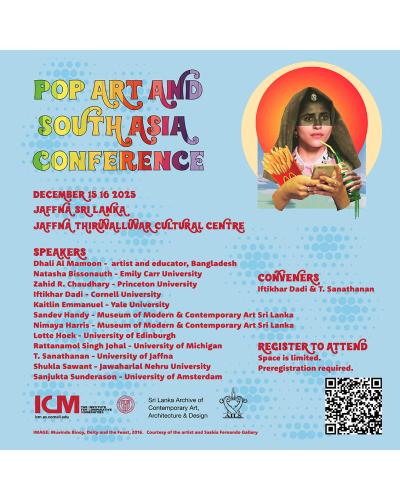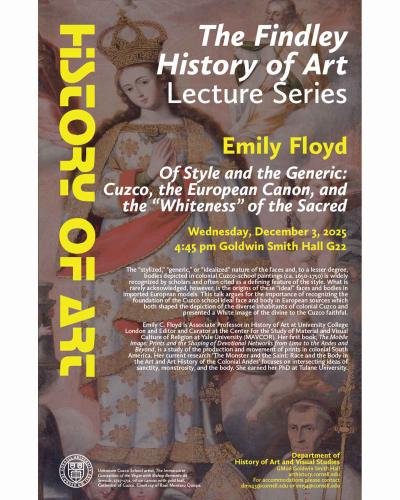Hindu art is abundant and vibrant in Southeast Asia, from peninsular Thailand to the island of Bali, a tradition that has continued unbroken for more than 1,500 years, said Wannasarn (Saam) Noonsuk, Ph.D. ’12 – and Cornell is a key center of scholarship in the field.
“Cornell has been a powerhouse in Southeast Asian Studies and very strong in art history,” said Noonsuk, who is now an assistant professor of art history at California State University (CSU) Fresno.
Inspired by the scholarly excellence and friendship he found studying art history and archaeology in the College of Arts and Sciences and in Cornell’s Southeast Asia Program (SEAP), Noonsuk edited “Performing Prowess: Essays on Localized Hindu Elements in Southeast Asian Art from Past to Present,” an open access book published in May.
The book includes an introduction by Kaja McGowan, associate professor of History of Art and Visual Studies, and essays by Cornell alumni and current doctoral candidates, tracing the ways cultural forces of Hindu belief have persisted in Southeast Asia even after this religion was overshadowed by Buddhism and Islam. The book is dedicated to McGowan, whose scholarly work continues to focus on Bali – home to the largest Hindu community outside India.
“Professor McGowan’s scholarship is vigorous in Balinese Hinduism, which is a unique form of religion, syncretizing indigenous beliefs with Hinduism and blending into the landscape and the life of the people in this renowned Indonesian island of Bali,” Noonsuk said. “She’s dedicated her life to the topic and taught her students, me included, to see the deep relationships between art forms and living culture.” McGowan used dance, artwork, spices and objects in her innovative pedagogy, Noonsuk said: “She made art alive and transformed her students’ learning in the process.”
Four of the contributors to “Performing Prowess” are former or current students of McGowan’s. Noonsuk wrote a chapter and concluding remarks on Hindu heritage in modern-day Thailand. Other Cornellian contributors are: John Miksic, Ph.D. ’79, Professor Emeritus of Southeast Asian Studies, National University of Singapore; Pamela Corey, Ph.D. ‘15, Faculty/B.A. Coordinator, Art and Media Studies, Fulbright University Vietnam; Anissa Rahadiningtyas, Ph.D. ’21, assistant curator at the National Gallery of Singapore; and Astara Light, doctoral candidate in History of Art (A&S), and recent recipient of a Fulbright Grant to conduct fieldwork in Indonesia.
“I am very proud of all of my students and their stellar contributions,” McGowan said. She noted in the introduction that “Performing Prowess” contains papers from scholars who are exploring how objects made of diverse materials and in unique aesthetic practices have moved across regions that today are called “South Asia” and “South-East Asia.”
In the introduction, McGowan writes that this volume engages with two modern paradigms for the study of Southeast Asia. The so-called “Indianization” paradigm maintains that Southeast Asia received its most important aesthetic and political ideologies from South Asia, she said, while opponents of this approach argue that the region was no longer considered a passive recipient of culture, “but an independent and fully autonomous center able to generate its own social, religious, and political organizational structures, many of which survived, and even thrived, when adjusting to later cultural imports” – a point of view coming to prominence in the 1960s.
“During the 1980s, more hybrid frameworks, such as O.W. Wolters’s ‘localization’ (mentioned by many of the authors in this volume) maintained that Southeast Asian communities selectively and self-consciously chose to embellish their worlds with choice motifs from various cultures including those of South Asia (Wolters 1982),” McGowan writes. “This appreciation of a wider social horizon has resulted from a change in theoretical orientation – an increasingly ecological turn toward ideas of a ‘connected history,’ and other postcolonial and globalized approaches – that assigns greater importance to both nonelites as agents of social and political change and to contacts among all groups beyond political boundaries. Many of the essays in this volume give agency to the powerful role of the sea, for example, and to the prowess of sea-faring skills in a richly maritime world (Noonsuk, Miksic).”
McGowan said she resists seeing India and Indonesia as two points, western and eastern modes of influence, but rather encourages studying reciprocal relationships between neighboring countries of Southeast Asia.
“My research explores the flow of materials, ideas, and artifacts along this highway – architecture, bronzes, textiles, ceramics, performance traditions and visualizations of the Ramayana – artifacts that move and those that are locally produced by artists who add what has problematically been called their own ‘local genius,’” McGowan said. “This accounts for the shaping of ideas and the development of styles across vast geographical and historical distances.”
The “prowess” of the title captures an important point in Hindu thought, McGowan wrote in the introduction – the ability for a person to channel godlike qualities in order to “achieve mighty things.”
The book is a joint publication between the Art History Program (CSU Fresno) and Thammasat University Press (Bangkok). A hardcover edition will be published in Thailand later this year.





